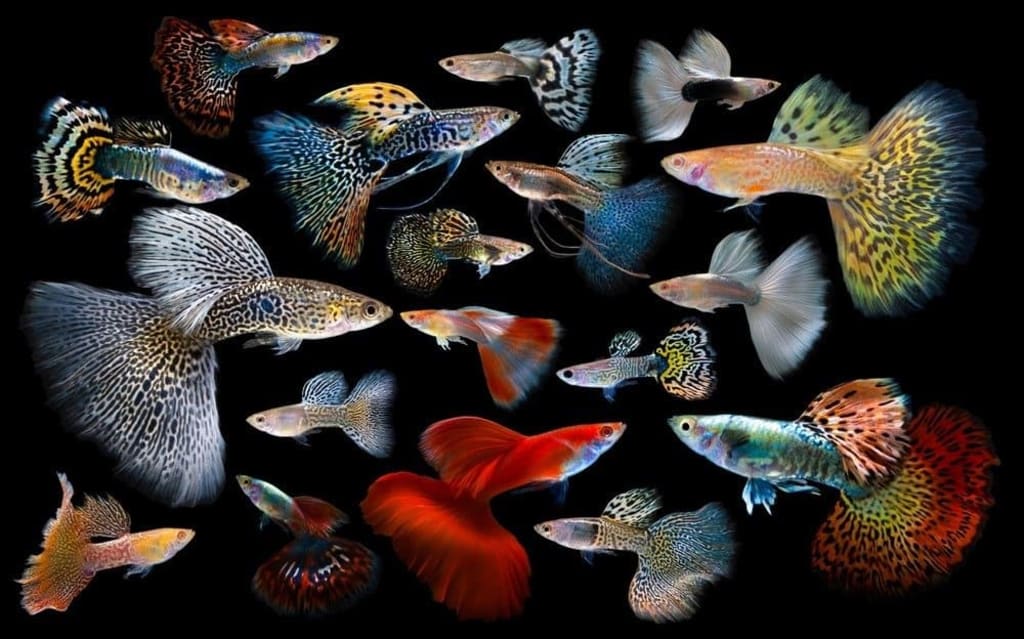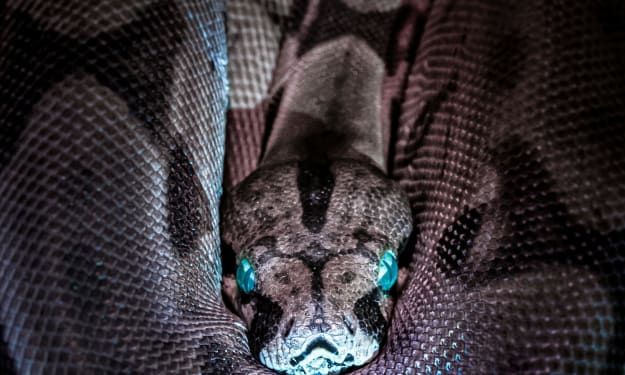
The Basics
The guppy is a small tropical fish originating in South America and is now observed throughout the world. It is also one of the most popular species saved in freshwater aquariums. Males are regarded for their colourful and ornate caudal and dorsal fins and the species is typically used as a model species in quite a number fields of research such as ecology and evolution.
Description
The guppy is a small fish. Males are significantly smaller than females, measuring just 0.6-1.4 in (1.5-3.5 cm) long. Females, at about 1.2-2.4 in (3-6 cm) in length, are about twice the size. Males also tend to be more colorful, and extravagant, with ornamental fins absent in the females.
Due to their recognition as a freshwater aquarium species, captive guppies have been subject to a vast quantity of selective breeding. This has led to the production of a range of strains, extraordinary by using their colors, shapes, sizes, and patterns. Wild guppies are normally now not as colorful as these home sorts and tend to be smaller.
Guppy Range and Habitat
Originally described in Venezuala and Barbados in 1859 and 1861, respectively, the species is native to many different Caribbean countries and countries in northern South America. They are a tropical species, constrained to warm environments rather close to the equator. Since their discovery, they have been brought to many parts of the world and are now common on all continents besides Antarctica.
Guppies have colonized absolutely all freshwater habitats accessible to them in their natural range. In particular, they are plentiful in streams in coastal regions. They have a tendency to inhabit smaller streams and swimming pools within this vary over larger our bodies of water. This even consists of brackish, distinctly saline waters where they are not typically located however have certainly managed to colonize and inhabit. Much like the molly (Poecilia sphenops), a carefully related fish that prefers saltwater habitats, guppies can acclimate to saltwater habitats where necessary.
Diet and Predators
In the wild, the guppy feeds on a variety of gadgets such as algae and detritus. They will also eat mineral particles and small invertebrates such as minuscule shrimp-like animals. They also feed on insects such as mosquitoes, mainly their larvae that are often laid in the waters the place guppies live. Guppies will frequently forage for meals in groups, using a collective gadget to alarm every other of any predatory threats. This lets in each person to be capable to spend greater time feeding and much less time scanning for predators.
As small fishes themselves, guppies are concern to predation through many species. Larger fishes, of course, will simply eat guppies of all sizes. A common species that preys on guppies in the wild is the blue acara (Aequidens pulcher). Many birds will also prey on guppies.
Reproduction
In the wild, guppies are fantastically productive, with girls birthing 2-3 generations of younger each year. Unlike many fish species which lay eggs, guppies are live-bearing, giving beginning to young fish that are independent of parental care from the immediate they are born. Young guppies will shape schools to ward off predators. However, being so small, they are of direction very vulnerableGuppies are one of the most frequent freshwater aquarium species in the world
Females will mate with more than one men at some point of every breeding season, a mating method regarded as ‘polyandry’. They will even extend the development of their brood if subsequent mates are greater appealing than her first partner. Females can save the sperm of men for up to 8 months in their ovaries and gonoducts. Normally, the gestation length for every brood is about 3-4 weeks however varies considerably with environmental factors such as temperature. Females
At about 10-20 weeks of age for ladies and just 7 weeks for males, these offspring will be sexually mature themselves. Guppy lifespan depends surprisingly on environmental factors such as the quantity of predation they are challenge to in their specific habitat however is typically solely about two years in the wild.
Fun Facts about Guppy!
With the guppy being existing in nearly each continent and a fairly popular species for scientific studies and home aquariums, there is no scarcity of exciting data to research about the species.
The Great Mosquito Colonizer
You may additionally marvel how the guppy – a extraordinarily small and not overtly charming fish at first look – made its way at some stage in the natural world and into the aquariums of millions. Indeed, a good deal of the introduction of the species took place through accident, possibly through poorly managed ship ballast water which can transport species and their larvae throughout oceans to novel habitats. However, in many components of the world, the guppy used to be introduced deliberately as a means of pest control.
Indeed, guppies have been introduced by using governments in well-intentioned however commonly futile and frequently catastrophic attempts to control local mosquito populations and their associated illnesses such as malaria. However, as has been discovered on many activities where non-native species are brought to new habitats, there have been unintended ecological penalties to this. The guppy lives in clearly all freshwater habitats made available to it in areas the place it has been introduced. This is awesome information for the guppy species itself. However, this high degree of adaptability capacity that guppies have outcompeted native fish in many of these habitats to which they have been introduced.
Sexual Dimorphism in the Guppy
Sexual dimorphism is pretty properly understood and identified in birds. Males are often very colourful and extravagant and advance habits and behaviors such as courtship dances that intensify these features. However, this phenomenon of wonderful physical appearances between species is common for the duration of the animal kingdom and occurs in fishes – which includes the guppy.
Male guppies have many color morphs and elaborate fins
Females play a large position in maintaining male’s extravagant fins and colors. They are attracted to the extra brightly coloured adult males – specifically these with orange spots on their flanks. This places selective strain on male guppy populations, commonly favoring these with orange spots as it may also be an indicator of their foraging capacity and overall health. However, in the wild, this bright coloration can also make men more inclined to being seen via predators and eaten, so it is a trade-off from an evolutionary perspective. Males will additionally perform courtship displays reminiscent of many birds, occasionally flexing their our bodies into an S-shape and vibrating unexpectedly with their tricky fins fluttering in the current.
A Model Specimen
Largely due to their low mortality rates in captivity, the guppy has been extensively used as a mannequin species for research in ecology, evolution, and more. Interestingly, guppies have 23 pairs of chromosomes, including a pair of intercourse chromosomes. This is the identical as in humans, making them apparent candidates for studies in genetics with implications for human health as well.
Variations between guppy populations in areas with exceptional environmental stresses and pressures have proven that their existence history will adapt to the conditions in which they exist. For example, guppies in areas where there are extra threats from predators will spend greater of their time and energy on reproducing young. They will mature faster and start reproducing formerly than guppies in areas barring predators. They will also reproduce more often and with larger brood sizes than guppies that face fewer environmental stressors.





Comments (1)
@vocal_creators @PetLife